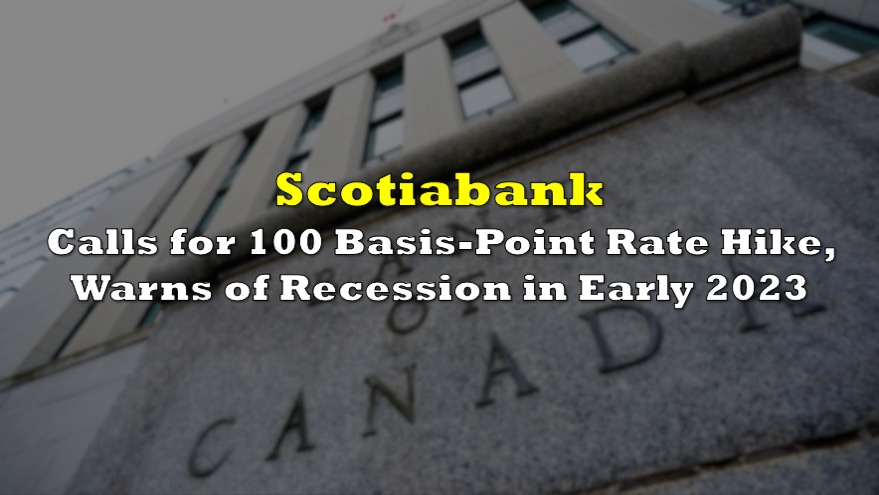The Bank of Nova Scotia (TSX: BNS), operating as Scotiabank, released its fiscal Q2 2023 financials, top billed by revenue of $7.93 billion. This is a decline from Q1 2023’s $7.98 billion and Q2 2022’s $7.94 billion, while analysts had expected an increase to $8.02 billion.
“I am pleased with the Bank’s stable operational performance in the quarter and encouraged that our strong capital and liquidity profile positioned us well to manage through the current environment of heightened macroeconomic uncertainty,” said Scotiabank CEO Scott Thomson.
The bank fell short of forecasts in the second quarter as it set aside more cash for loans that could go bad if the economy deteriorates.
$BNS $BNS.TO
— Canadian Banks (@cadbanksonly) May 24, 2023
Q2/F23 EPS of $1.70 misses $1.76 consensus. CET1 Ratio of 12.3% a positive surprise with higher-than-expected B3 implementation. Dividend up 3c also a surprise (consensus mixed on if they go). New CRE slide in the deck (33). PCLs in line, but trend on some (1/2)…
In the three months ending April 30, Scotiabank’s net income plummeted more than 20% to $2.16 billion, compared to the same period in the previous year. The bank’s adjusted net income fell to $2.174 billion, or $1.70 per share. Bloomberg estimates had predicted $1.76 per share.
The Canadian banking business of Scotiabank reported an adjusted profit of $1.06 billion this quarter, down from roughly $1.18 billion last year, due to greater provisions for credit losses and higher non-interest expenditures.
Higher credit loss provisions also weighed on adjusted profit in the international banking division, which fell to $673 million in the second quarter from $689 million the previous year. Pre-tax, pre-provision earnings improved due to strong loan growth and net interest margin expansions, according to the bank.
Scotiabank’s worldwide wealth management net income decreased to $362 million on an adjusted basis from $415 million the previous year, while earnings in global banking and markets fell to $401 million from $488 million the previous year.
Customer deposits increased by a double-digit percentage point over the previous year, outpacing loan growth.
However, a bleak economic outlook, especially affecting corporate and commercial portfolios, forced the bank to increase its provision for credit losses – cash set aside by banks to cover potentially problematic loans — to $709 million, up from $219 million in the same quarter last year.
Allowance for credit losses increased to $5.93 billion at the end of the quarter from $5.67 billion, which the bank attributes primarily to the impact of foreign currency translation in international banking portfolios, as well as a continued unfavorable macroeconomic outlook, which has impacted corporate and commercial portfolios.
Despite the miss, Scotiabank is the first of the Big Six to show that the banking crisis that unfolded south of the border has had little impact on its capital position. Its capital equity tier 1 ratio, which compares a bank’s capital to its risk-weighted assets to assess resilience, was 12.3 percent, which was higher than the legal requirement of 12%.
Subsequently, the bank increased its quarterly dividend and has shown resilience with deposit growth and liquidity in the aftermath of many bank failures in the United States in March. The dividend amount is raised by three cents to $1.06 per share, payable on July 27.
Scotiabank last traded at $66.51 on the TSX.
Information for this briefing was found via Financial Post, MarketWatch, and the sources mentioned. The author has no securities or affiliations related to this organization. Not a recommendation to buy or sell. Always do additional research and consult a professional before purchasing a security. The author holds no licenses.









